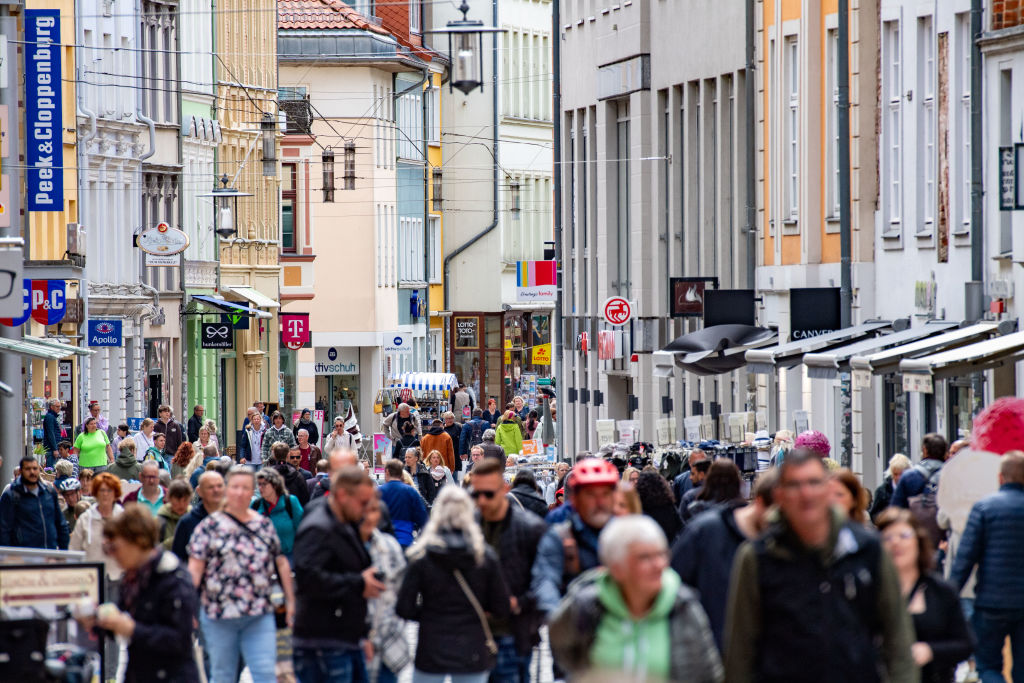
Germany suffered its first recession since the start of pandemic, extinguishing hopes that Europe’s top economy could escape such a fate after the war in Ukraine sent energy prices soaring.
First-quarter output shrank 0.3% from the previous three months following a 0.5% drop between October and December, the statistics office said Thursday. Its initial estimate, last month, was for stagnation.
“The reluctance of households to buy was apparent in a variety of areas,” the office said in a statement. “Households spent less on food and beverages, clothing and footwear, and on furnishings.” They also purchased fewer electric cars as incentives were reduced.
Elsewhere, there was a plunge in government expenditure, while investment was up —aided by construction in unseasonably warm weather.
The result is a setback for Germany, which despite escaping the bleakest scenarios feared in the aftermath of Russia’s invasion has nevertheless succumbed to a recession that Chancellor Olaf Scholz appeared to rule out in January.
“We must turn the corner in economic policy and put an end to the neglect of our competitiveness,” Finance Minister Christian Lindner said in Berlin, adding that this included the “acceleration of planning and approval procedures and strengthening the idea of technological freedom in order to leverage our creative potential.”
Markets shrugged off Thursday’s numbers — despite their implications for the wider performance of the 20-nation euro zone.
In Germany, companies like Zalando SE reflect the flagging consumer sentiment. The fashion retailer saw inventory levels driven higher in the first quarter by falling demand. Domestic car orders, meanwhile, were down by about a third between January and April, according to the VDA auto industry association.
The key manufacturing sector is also proving to be a problem: A deepening downturn is casting doubt on the rebound many anticipate for the coming quarters.
Indeed, industrial weakness is taking a toll on the business outlook. A gauge of expectations by the Ifo institute fell for the first month in eight in May, while a survey by lobby group DIHK pointed to zero GDP growth for 2023.
A Bundesbank report this week offered some optimism — suggesting the economy may grow “slightly” this quarter as large order backlogs, an easing of supply bottlenecks and lower energy costs support manufacturers.
But goods demand is cratering as consumers faced with elevated inflation prefer to splurge on leisure and travel. That’s making economic growth increasingly uneven — a trend some analysts say isn’t sustainable.
“The optimism at the start of the year seems to have given way to more of a sense of reality,” ING economist Carsten Brzeski said in a report to clients. “A drop in purchasing power, thinned-out industrial order books as well as the impact of the most aggressive monetary policy tightening in decades, and the expected slowdown of the US economy all argue in favor of weak economic activity.”
For economists at Commerzbank, a second-half recession now looks likelier than the rebound most of their colleagues continue to forecast.
Inflation isn’t helping. It still exceeds 7% and isn’t expected to retreat quickly as rising wages feed strong underlying pressures, according to the Bundesbank.
The European Central Bank’s efforts to bring price gains back to its 2% target risk further damping demand. Bank loans are already getting pricier and interest-rate hikes aren’t yet complete, risking a stronger drag on growth.
—With assistance from Joel Rinneby, Kristian Siedenburg, Christoph Rauwald, Monica Raymunt, Constantine Courcoulas and Kamil Kowalcze.
More Must-Reads from TIME
- Cybersecurity Experts Are Sounding the Alarm on DOGE
- Meet the 2025 Women of the Year
- The Harsh Truth About Disability Inclusion
- Why Do More Young Adults Have Cancer?
- Colman Domingo Leads With Radical Love
- How to Get Better at Doing Things Alone
- Michelle Zauner Stares Down the Darkness
Contact us at letters@time.com